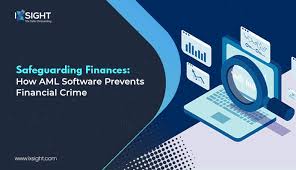In the world of modern finance, regulatory scrutiny has grown increasingly intense. Financial institutions are expected to know their customers inside out, track all transactions with pinpoint accuracy, and flag anything that hints at suspicious activity. Two of the most important pillars supporting this framework are Anti-Money Laundering (AML) and Know Your Customer (KYC) regulations.
But here’s the catch: your compliance framework is only as strong as the data it relies on. And one of the most overlooked problems in data management is duplication. When your systems are riddled with duplicate customer profiles, you not only risk regulatory penalties but also create operational inefficiencies that drain resources and impair decision-making.
That’s where Deduplication Software becomes a game changer.
This article explores how deduplication technology plays a vital role in improving the performance of AML Software, strengthening KYC programs, and enhancing overall regulatory compliance.
The AML and KYC Landscape: A Data-Driven Challenge
AML and KYC frameworks are designed to prevent illicit financial activity—money laundering, terrorism financing, tax evasion, and more. These regulations require financial institutions to:
-
Accurately identify and verify customer identities
-
Monitor customer behavior over time
-
Flag and investigate suspicious transactions
-
Report potential violations to regulatory authorities
These tasks heavily depend on customer data being accurate, current, and unified across systems.
Unfortunately, in the real world, data tends to be messy. A single customer might exist in your database under slightly different names or email addresses. Think “Michael B. Jordan” vs “Mike Jordan” or “M. Jordan.” This fragmentation leads to disjointed profiles and makes it hard to gain a single, unified view of an individual or entity—an essential prerequisite for proper risk assessment.
What Is Deduplication Software?
Deduplication Software refers to tools and algorithms designed to identify and eliminate duplicate records within a dataset. Unlike simple filters that search for exact matches, modern deduplication tools use sophisticated matching logic to detect near-matches and variations across multiple data points such as names, phone numbers, addresses, and national IDs.
By consolidating multiple instances of the same customer into one “golden record,” these tools allow financial institutions to work with more accurate and actionable data.
Why Duplicates Are a Threat to AML and KYC Programs
Duplicate records aren’t just a nuisance—they’re a compliance risk. Here’s how they can compromise your AML and KYC efforts:
1. Inaccurate Risk Profiling
When a customer exists in the system multiple times, risk scores can get diluted or inflated. One version may show normal behavior while another displays risk indicators. This fragmented view can lead to flawed risk assessments and missed red flags.
2. Failed Sanctions Screening
If sanctions screening tools are fed duplicate data, they may flag one profile but miss another variation of the same individual. That increases the chance of your institution inadvertently transacting with a blacklisted party—an offense that could lead to hefty fines.
3. Escalating Operational Costs
False positives caused by duplicate records increase investigation workloads. Compliance teams waste hours cross-referencing and verifying records that should have been merged from the start.
4. Reputational Risk
Mistakes in customer verification due to data duplication can result in customer dissatisfaction and erosion of trust. Worse, public regulatory penalties can tarnish your institution’s reputation permanently.
Strengthening AML Software with Deduplication Capabilities
Modern AML Software has become increasingly advanced, offering capabilities like AI-based monitoring, rule engines, and real-time transaction screening. But even the smartest algorithm will falter if the data it processes is redundant or inconsistent.
Here’s how deduplication directly enhances AML systems:
-
Improved Alert Accuracy: When duplicate customer records are merged, the AML system can better assess historical activity and generate more accurate alerts.
-
Consolidated Investigation Workflows: Investigators access a single, comprehensive profile rather than toggling between records, accelerating case resolution.
-
Lower False Positives: Unified profiles reduce erroneous matches, cutting down on unnecessary manual reviews and alerts.
Enhancing KYC with Clean, Unified Data
KYC starts with identity verification—but it doesn’t end there. Financial institutions must also understand customer behavior, source of funds, and ongoing risk exposure. Duplication obscures all of that.
Deduplication Software ensures that KYC data is not just clean, but also actionable. With a golden customer record in place, onboarding becomes faster, re-verification is simplified, and ongoing monitoring is more precise.
This process also supports compliance with data retention and privacy regulations like GDPR and CCPA. When a customer requests access or deletion of their data, institutions can act with confidence, knowing that all instances of their information are accounted for.
The Role of Supporting Data Tools
While deduplication plays a central role, it works best when part of a holistic data quality strategy. This is where tools like Data Cleaning Software and Data Scrubbing Software come into play.
-
Data Cleaning Software helps identify and correct inaccuracies, inconsistencies, and incomplete data in customer records. This includes normalizing formats, fixing spelling errors, and standardizing units.
-
Data Scrubbing Software goes a step further by removing or flagging potentially outdated or irrelevant data from databases. This ensures that only high-quality information enters the deduplication engine, improving its efficiency and effectiveness.
Together, these tools create a healthy data environment, enabling AML and KYC systems to operate at their full potential.
Sanctions Screening and the Data Quality Connection
Another crucial application is in sanctions compliance. Sanctions Screening Software is tasked with checking customer records against global watchlists. When customer data is duplicated or inconsistent, it becomes increasingly likely that a match will be missed—or worse, overlooked entirely.
By integrating deduplication and data cleaning into the data pipeline, institutions ensure that sanctions screening tools work with harmonized, comprehensive data. This minimizes both false positives and false negatives and ensures that risky relationships are not slipping through the cracks.
Real-World Example: The Cost of Duplication
In 2021, a mid-sized European bank was fined €5 million for AML compliance failures, largely stemming from fragmented customer data. An audit revealed that their system housed over 20,000 duplicate customer profiles, resulting in missed sanctions hits and flawed risk assessments.
After integrating a deduplication engine with their existing AML software, the bank reduced duplicate records by 85%, cut false positives by 30%, and streamlined investigations by 40%. The system also passed its next audit without any major observations.
This real-world case highlights the tangible benefits of addressing the duplication problem head-on.
Best Practices for Implementing Deduplication
-
Assess Your Data Landscape: Audit your customer data to identify duplication hot spots.
-
Choose the Right Tool: Invest in deduplication software with customizable match rules, language support, and real-time processing.
-
Integrate with AML and KYC Systems: Ensure your deduplication solution feeds directly into compliance systems for consistent, synchronized updates.
-
Monitor and Optimize Continuously: Deduplication isn’t a one-time fix. Set up automated jobs, dashboards, and alerts to catch future duplicates early.
-
Educate and Train Staff: Compliance officers and IT teams must understand how duplication affects their roles and how to interpret deduplication outcomes.
Conclusion
In an age where data drives compliance, ignoring duplication is no longer an option. Deduplication Software acts as the backbone of a clean, consistent, and trustworthy customer dataset. By integrating it into your compliance ecosystem—alongside AML Software, Data Cleaning Software, Data Scrubbing Software, and Sanctions Screening Software—you set the stage for a smarter, faster, and more resilient AML and KYC program.
Ultimately, the financial institutions that invest in data quality today will be the ones best equipped to tackle tomorrow’s regulatory challenges. Clean data isn’t just a nice-to-have—it’s a compliance imperative.












